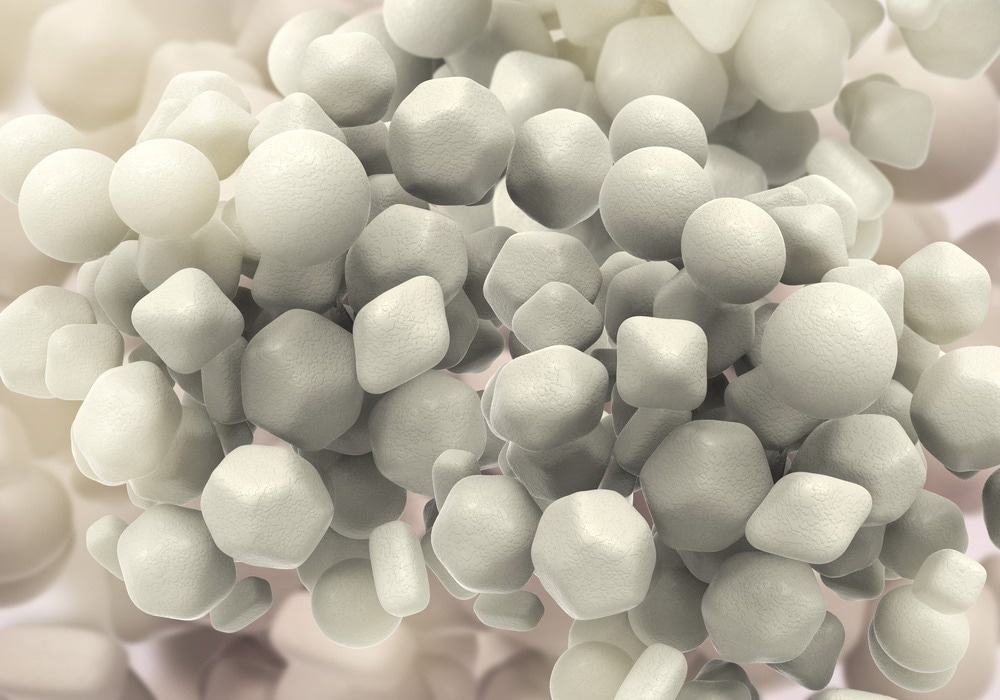The sintering phenomenon or thermal deactivation of supported nanoparticles results in loss of active surface area, leading to their performance degradation affecting catalysis reactions. Scientists have proposed two mechanisms for sintering nanoparticles: particle migration and coalescence and Ostwald ripening.

Study: Sintering Behaviors of Supported Nanoparticles Related to Spatial Location by a Quasi-Four-Dimensional TEM. Image Credit: Kateryna Kon/Shutterstock.com
Despite several attempts, the combination of in situ stimulation and three-dimensional (3D) characterization could not provide a deep understanding of the sintering behaviors of nanoparticles. An article published in the journal Nano Letters reported the design of a unique homemade X-Nano holder that integrated an in situ Joule heating and electron tomography (ET) to develop a quasi-four-dimensional transmission electron microscope (TEM) approach.
The 3D characterization and statistical analysis revealed the correlation between the location and sintering behavior of the nanoparticles. Furthermore, the quasi-four-dimensional TEM revealed that the external nanoparticles sintered via migration and coalescence, while the internal nanoparticles sintered Ostwald ripening.
The quasi-four-dimensional TEM developed in the present work could be extended to other nanomaterials to have a deeper understanding of their 3D structural evolution under an external stimulus.
Advantage Of Quasi-Four-Dimensional TEM Over Conventional TEM Techniques
Metal-based nanoparticles are often used in catalytic reactions due to vast active sites owing to their high surface/volume ratio. Nevertheless, this advantage is a driving force for sintering, leading to performance degradation in nanoparticles. Thus, having extensive knowledge of sintering mechanisms is critical to designing nanoparticles with high thermal stability.
Although identical location (IL) TEM can reveal the changes in identical nanoparticles under catalytic conditions, an in situ holder with quasi-four-dimensional TEM serves as a convenient TEM technique to study the stimuli-based nanoparticle’s evolution in real-time.
Thus, systematic recording of the real-time sintering phenomena can help enunciate the sintering mechanism or reveal the intrinsic resistance property to the sintering phenomenon. However, the two-dimensional (2D) projection of conventional TEM imaging restricts the visibility of spatial information in a 3D object.
The information on nanoparticles’ spatial location is critical to analyzing their sintering behavior, which cannot be obtained based on 2D projection through conventional TEM. Hence, integrating the quasi-four-dimensional TEM with ET introduced the 3D characterization ability, along with the tilting function.
Although two ET-specialized TEM holders were previously reported and commercialized for 3D characterization, they lacked the ability of in situ TEM characterization, limiting the understanding of nanoparticle’s 3D evolution during the sintering process.
Sintering Behaviors of Supported Nanoparticles via Quasi-Four-Dimensional TEM
In the present study, gold nickel (AuNi) hybrid nanoparticle-supported carbon nanofiber (CNF) was used as the model to study the sintering behavior. A homemade X-Nano holder helped draw information on the nanoparticle’s spatial location and corresponding sintering mechanism by integrating time dimension into ET.
Compared to conventional techniques like ILTEM and in situ TEM, which only hastily affirmed the location of supported nanoparticles on the outer surface of CNF, the quasi-four dimensional-TEM characterization in the present work provided spatial and temporal resolution by the X-Nano holder. This facilitates the extensive study of the sintering behavior of nanoparticles under an external stimulus.
Furthermore, reducing the time interval of tomogram acquisition using ET can help achieve a higher temporal resolution, which captures the 3D evolution of nanoparticles due to sintering. The results from quasi-four dimensional-TEM characterization revealed that the nanoparticles on the inner side remained smaller than the external ones after sintering.
Nevertheless, the size distribution of internal nanoparticles was narrower than the external ones. Moreover, the statistical results of size change and nanoparticle’s sintering behavior were analyzed by comparing kinetic simulations with the experimental results using quasi-four-dimensional TEM.
The results obtained from kinetic simulation supported the results from the quasi-four-dimensional TEM characterization, confirming that the internal nanoparticles in CNF possessed strong interaction with surrounding carbon atoms and sintered via Ostwald ripening, while the weak interaction of external nanoparticles with the CNF surface resulted in sintering via migration and coalescence.
Thus, the quasi-four-dimensional TEM approach adopted in the present study helped understand the 3D evolution of nanoparticles when sintered under external stimuli. This method could also be applied to other nanomaterials to obtain information on location-dependent sintering behavior.
Conclusion
To summarize, the homemade X-Nano holder developed in the present study was integrated with an in situ Joule heating and ET-specialized quasi-four dimensional TEM. Thus, the developed integrated system helped study the sintering behavior of the nanoparticles under external stimulus in a quasi-four-dimensional TEM approach.
The spatial location and the corresponding variation in size distribution via 3D characterization revealed that the internal nanoparticles had a smaller size and uniform distribution than their external counterparts. Additionally, the statistically kinetic analysis and characterization using quasi-four-dimensional TEM showed that the sintering mechanism of internal nanoparticles was via Ostwald ripening, while that of external nanoparticles was via migration and coalescence.
Overall, the present study revealed the critical role of nanoparticles’ spatial location in understanding the sintering behavior of supported nanoparticles. The application of the homemade X-Nano holder developed in the present study can be extended to a landscape of nanomaterials, contributing valuable information on nanomaterial’s sintering kinetic theory.
Reference
Liang, C., Sun, D., Lv, H., Chu, W., Duan, Y., Bu, Y., Liu, J et al. (2022). Sintering Behaviors of Supported Nanoparticles Related to Spatial Location by a Quasi-Four-Dimensional TEM. Nano Letters. https://pubs.acs.org/doi/10.1021/acs.nanolett.2c01538
Disclaimer: The views expressed here are those of the author expressed in their private capacity and do not necessarily represent the views of AZoM.com Limited T/A AZoNetwork the owner and operator of this website. This disclaimer forms part of the Terms and conditions of use of this website.